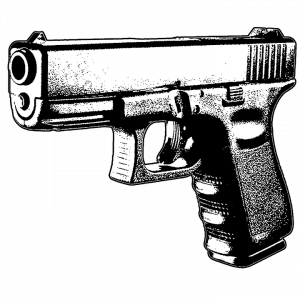 The evidence clearly shows that the mental health of Americans has declined since the start of the COVID-19 pandemic – and more so for teens, older adults, young mothers, and minorities.
The evidence clearly shows that the mental health of Americans has declined since the start of the COVID-19 pandemic – and more so for teens, older adults, young mothers, and minorities.
There is a myriad of reasons for this growing problem: loneliness related to the pandemic isolation, an increase in and misuse of social media, increased financial pressures, and more. Dangerous violence in neighborhoods is an important factor, according to a recent study by Sarah James, a former Cornell postdoctoral fellow, now a researcher at the University of Minnesota’s Population Center.
“Our original idea was to understand how violence matters for child development,” James said. “We decided to focus on gun violence because firearms are used in three-quarters of homicides in the United States and we know that exposure to violent events affects health and behavior going forward. It’s not something that abates after a day or two.”
To determine the prevalence of gun violence near adolescents’ homes and schools, James and her team used national data on deadly gun violence incidents from the Gun Violence Archive and combined it with data from the Fragile Families and Child Wellbeing Study, a study of 5,000 children born between 1998 to 2000 in large U.S. cities.
The team looked for instances of deadly gun violence within 500 meters – about one-third of a mile or a 6-minute walk – of young people’s homes and schools over the course of a year, when the teens were about 15 years old. (They excluded gun deaths by suicide from their analysis.)
Overall, they found that 21 percent of adolescents lived or attended school within 500 meters of a deadly gun violence incident over the course of a year. They also found that this exposure varied by racial and ethnic group and household income. Fewer than 5 percent of white adolescents were exposed to deadly gun violence compared to about a quarter of Hispanic adolescents and about a third of Black adolescents. About one-third of poor or near-poor adolescents were exposed to deadly gun violence, versus 10 percent of middle-to-high income adolescents.
The variations in adolescents’ exposure to deadly gun violence were expected, but James said she was shocked by the sharp disparities, especially when combining race, ethnicity, and income. Close to half of poor black adolescents and one-third of poor Hispanic adolescents were exposed to deadly gun violence, compared to 2 percent of middle-to-high-income white adolescents.
“We find that the disadvantages compound,” she said. “What was really striking to me is that even Black and Hispanic adolescents in the most well-off households had more exposure than white families living in the poorest households.” About one in five middle-to-high-income Black and Hispanic adolescents were exposed to deadly gun violence, versus about one in 10 poor white adolescents.
The researchers also found that for white and Hispanic adolescents, a larger share of their exposure to deadly gun violence was near their schools, while Black adolescents were more likely to be exposed to gun violence near their homes.
“These findings are similar to prior research on residential segregation, which shows that ethnic and racial groups are associated with the types of neighborhoods where people live because of the history of housing discrimination in this country,” James said. “Understanding how schools and other spaces in which adolescents spend their time complicate this story and is certainly something to pursue in the future.”
The take-home message: Deadly violence in neighborhoods harms the mental health of young residents; this is a much more serious and extensive problem for racial minorities, especially those who live in poverty.



Speak Your Mind